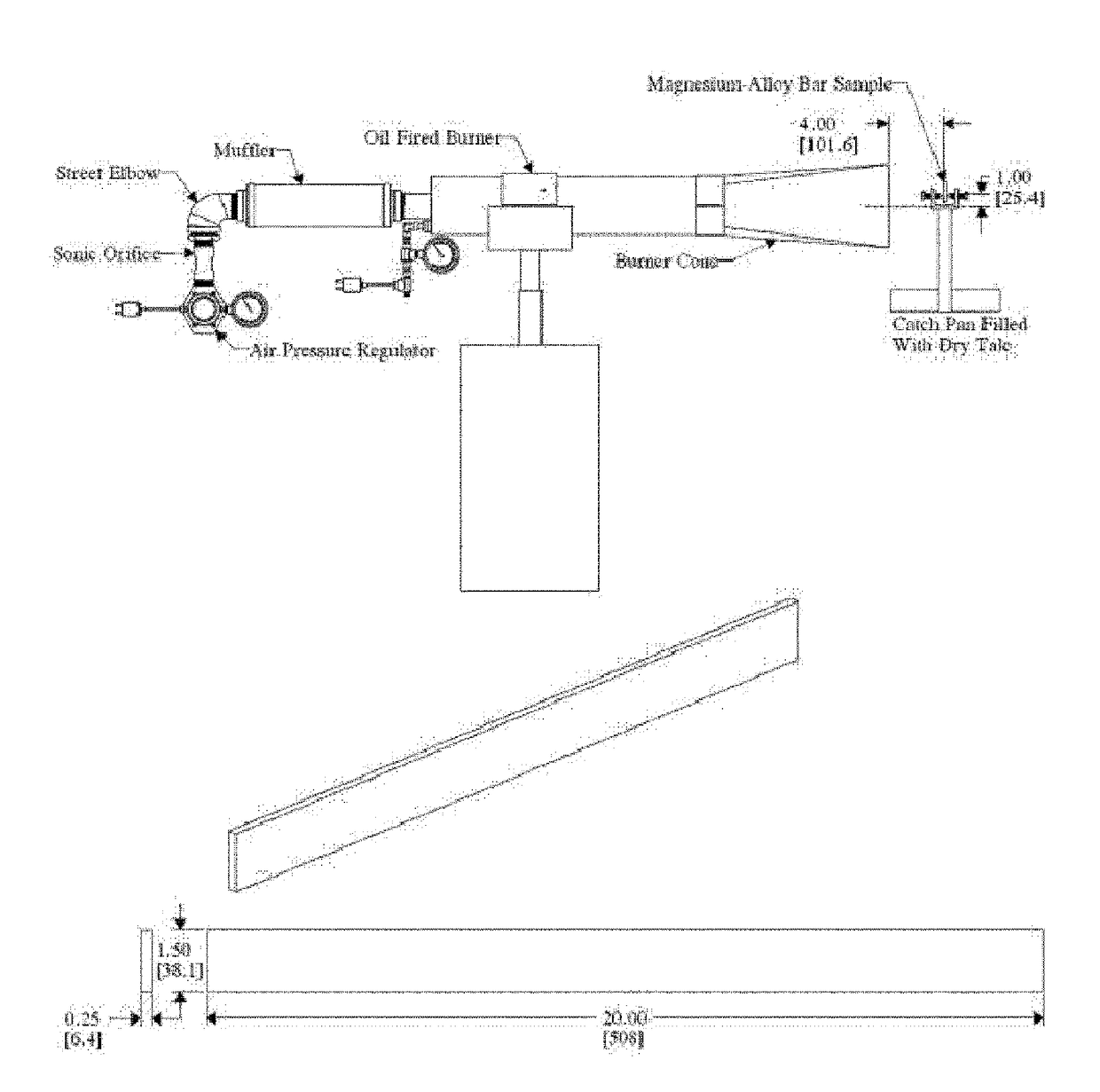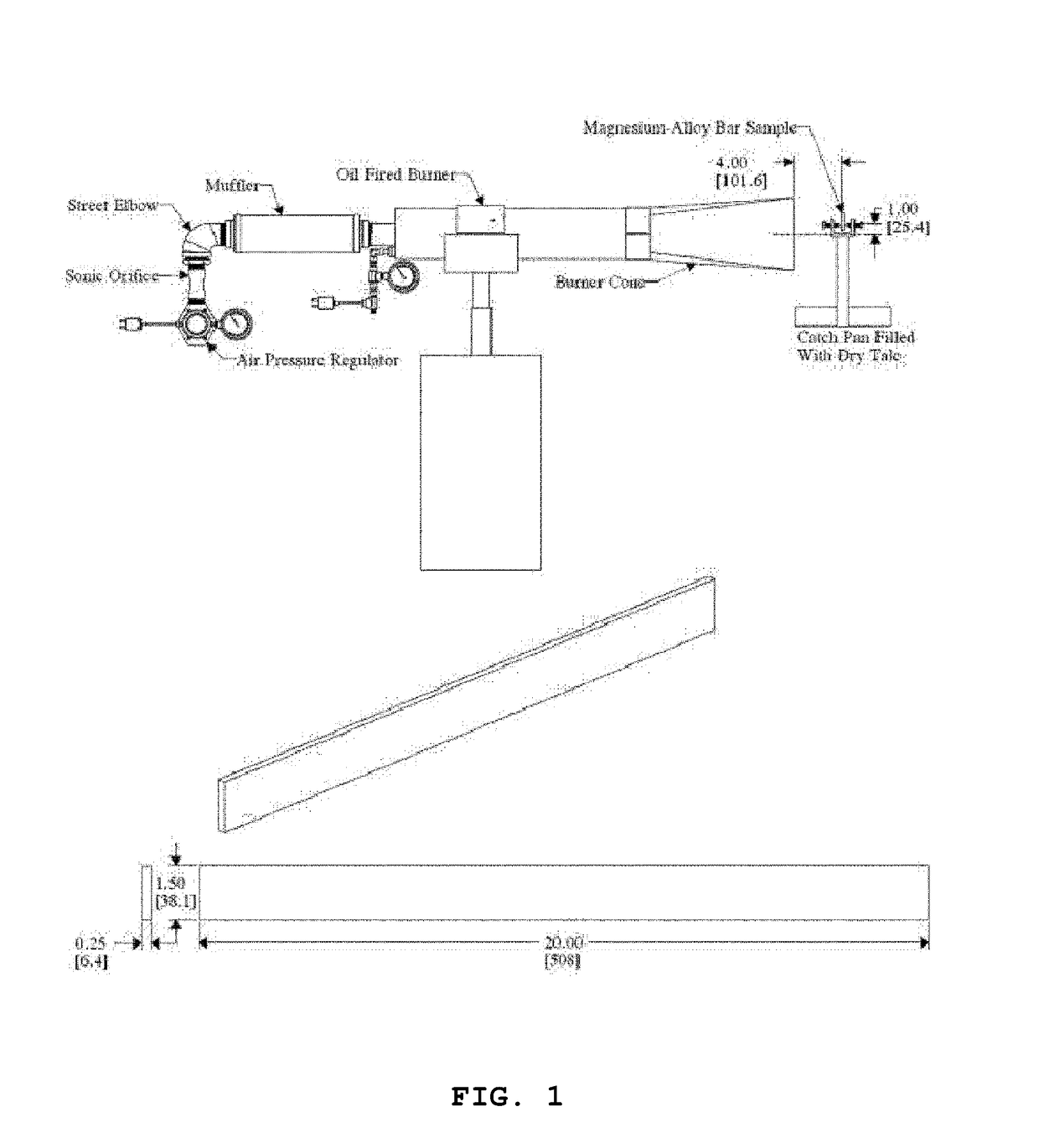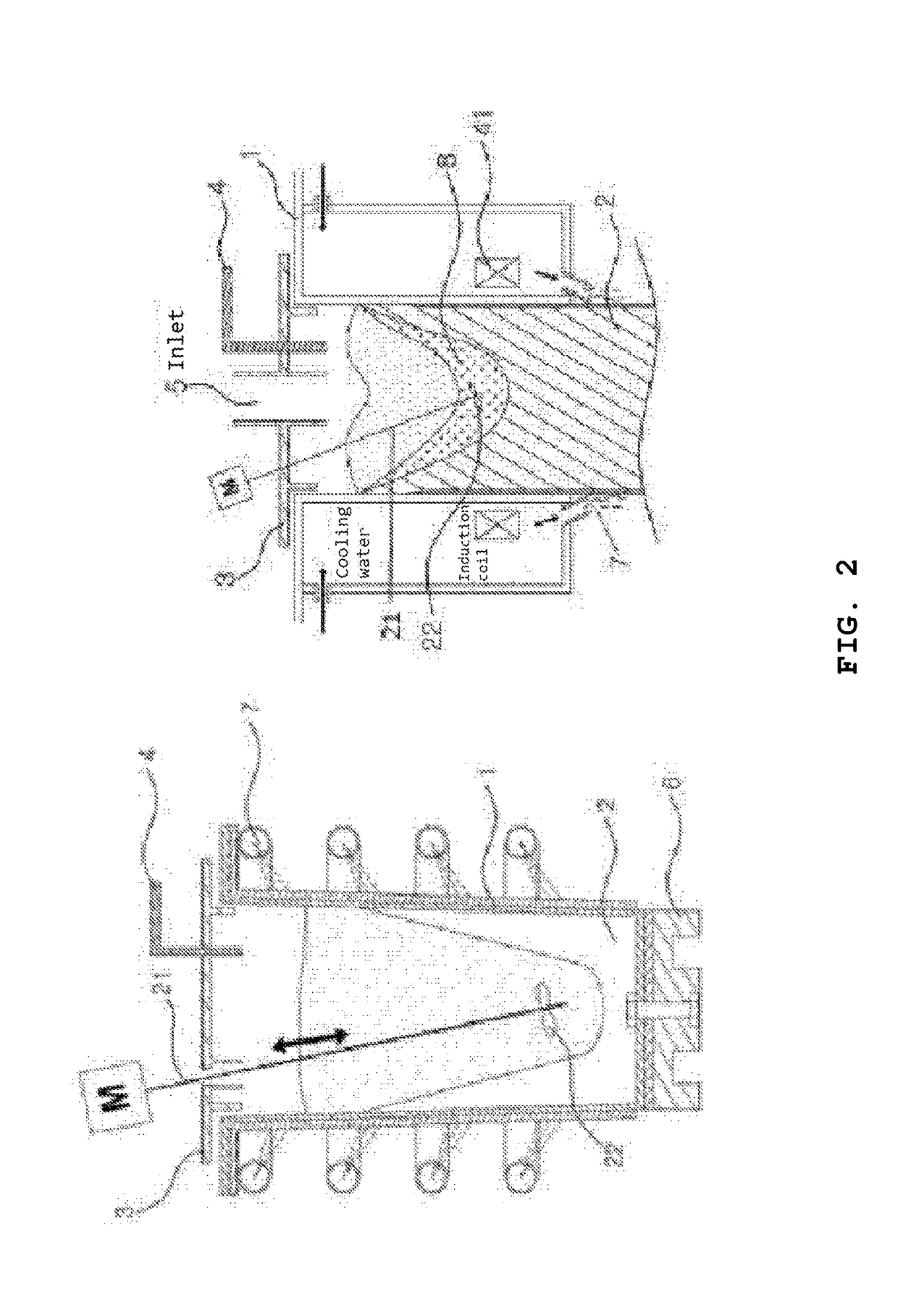However, magnesium has a hexagonal close-packed lattice structure having not many slip
system, which is essential for plastic deformation, and forming thereof is mainly performed through
casting owing to poor extrudability or
formability.
Here,
sand casting makes it difficult to form a desired shape, and
die casting causes many problems in the subsequent surface treatment process because the cast structure thereof is porous.
However, these materials are developed so as to have a basal texture after annealing treatment, and a plate or a profile subjected to unidirectional plastic deformation has high
anisotropy and makes it easy to form extension twins, and the commercialization thereof is delayed owing to problematic plastic working upon real-world application despite the high
ductility thereof.
Since
extrusion at a temperature of 400° C. or more is carried out in a temperature range in which a low-melting-point eutectic
liquid phase and an alpha-magnesium
solid solution co-exist due to frictional heat with a die,
wrinkle-like defects, in which fine surface cracks resembling fingerprints appear, may occur.
Such fine surface defects may decrease fatigue strength and thus must be removed.
In actual fields, however, the removal thereof is not easy in terms of cost, environmental factors, and safety issues due to dust ignition.
Moreover, conventional AZ- and AM-based magnesium alloys mainly used for a wrought product are problematic because flame retardancy is not assured due to a low-melting-point eutectic phase.
Such AZ- and AM-based magnesium alloys are disadvantageous in that
copper (Cu) or high-melting-point iron-based impurities (Fe, Ni) having low
solubility may form initial precipitates during the solidification thereof, and a beta-Mg17Al12 compound of aluminum and magnesium, which is subsequently precipitated, may form coarse plate-like precipitates, and such precipitates are thus interconnected and
heat transfer is thus blocked, and thermal
conductivity is remarkably lowered even by the addition of about 3 to 4% thereof (Ed. G. L. Song,
Corrosion of
Magnesium Alloys, 2011, pp.
Thus, when a flame is applied to such a material, it is easy to drastically partially increase the temperature of the heated portion of the structure owing to its low thermal
conductivity.
When it is dissolved, it easily reacts with
oxygen in the air and ignites, and even when the flame is extinguished, it is difficult to decrease the temperature of the material due to slow thermal
diffusion, and thus
combustion continues, making it difficult to achieve rapid extinguishment, and thus ensuring safety becomes impossible.
The concern about fire affects not only vehicles but encompasses all industries, and the application thereof has thus been greatly delayed.
These alloys manifest excellent flame retardancy due to a strong
oxide film constituted by a
rare earth element but require a large amount of expensive elements or have poor plastic workability, and thus do not adequately satisfy market requirements.
When the
rare earth element is contained in an amount of 4% or more, adverse effects in which ductility is remarkably decreased occur, and thermal conductivity is generally decreased with an increase in the amount of the
alloy element that is added.
In particular,
zirconium functions to fine the grain size and to increase flame retardancy but has very low thermal conductivity and plastic workability.
Elektron 21 contains about 4% of a
rare earth element and 0.5% or less of zinc and thus exhibits high thermal conductivity of 116 W / m·K and superior ignition suppression performance but very low elongation of about 2%, making it difficult to perform plastic working.
ZE10, containing
zirconium, has low thermal conductivity and plastic workability and has to be molded through a special molding process such as ECAP, making it difficult to actually use in plastic working applications in industrial sites.
However, this alloy suffers from very low plastic workability.
Furthermore, a method of increasing thermal conductivity by mixing magnesium with
silicon carbide (SiC) or fibrous
alumina has been disclosed, but plastic workability is deteriorated, and thus the method is unsuitable for use in a
tempering process (A. Rudajevova et al., On the Thermal Characteristics of Mg-Based Composites, Kompozyty, 4, 10, 2004).
Hence, the production of a magnesium alloy imparted with both flame retardancy and plastic workability is regarded as difficult.
Furthermore, this patent does not consider improvements in flame retardancy of the material at all.
However, this material is composed of 6 to 9% of aluminum with 0.8 to 2% of
strontium or 1.5 to 2.2% of
calcium, the total amount of alloy elements being 8 to 11%, whereby the resulting alloy has low ductility and is unsuitable for use in a
tempering process.
However, in this patent, since a
melt temperature has to be maintained at 850 to 900° C. in order to dissolve high-melting-point elements such as calcium,
manganese,
yttrium,
erbium, etc.,
gas solid solubility and
oxide content in the melt are unnecessarily increased, and thus the concentration of impurities is increased, and moreover, the likelihood of ignition of the melt is high, undesirably deteriorating working safety.
These alloys are improved in flame retardancy but still exhibit low plastic workability and thermal conductivity due to the presence of a large amount of
tin, having high
precipitation hardenability, and thus, in order to extrude billets therefrom,
thermal treatment for a long period of time at a high temperature of 480 to 500° C. and an
extrusion pressure of 9946 kgf / cm2 are required, making it difficult to perform plastic working at a pressure of 1000 kgf / cm2 or less, which is a typical aluminum extruder pressure in the related industry.
However, when this alloy is manufactured into commercially available billets, the large amount of zinc may cause gravitational segregation, and thus billets may break down during extrusion, or plastic workability may decrease, and only high strength and plastic workability are mentioned in the detailed description thereof, and no grounds for expecting good performance in flame retardancy or thermal conductivity are found therein.
 Login to View More
Login to View More 


